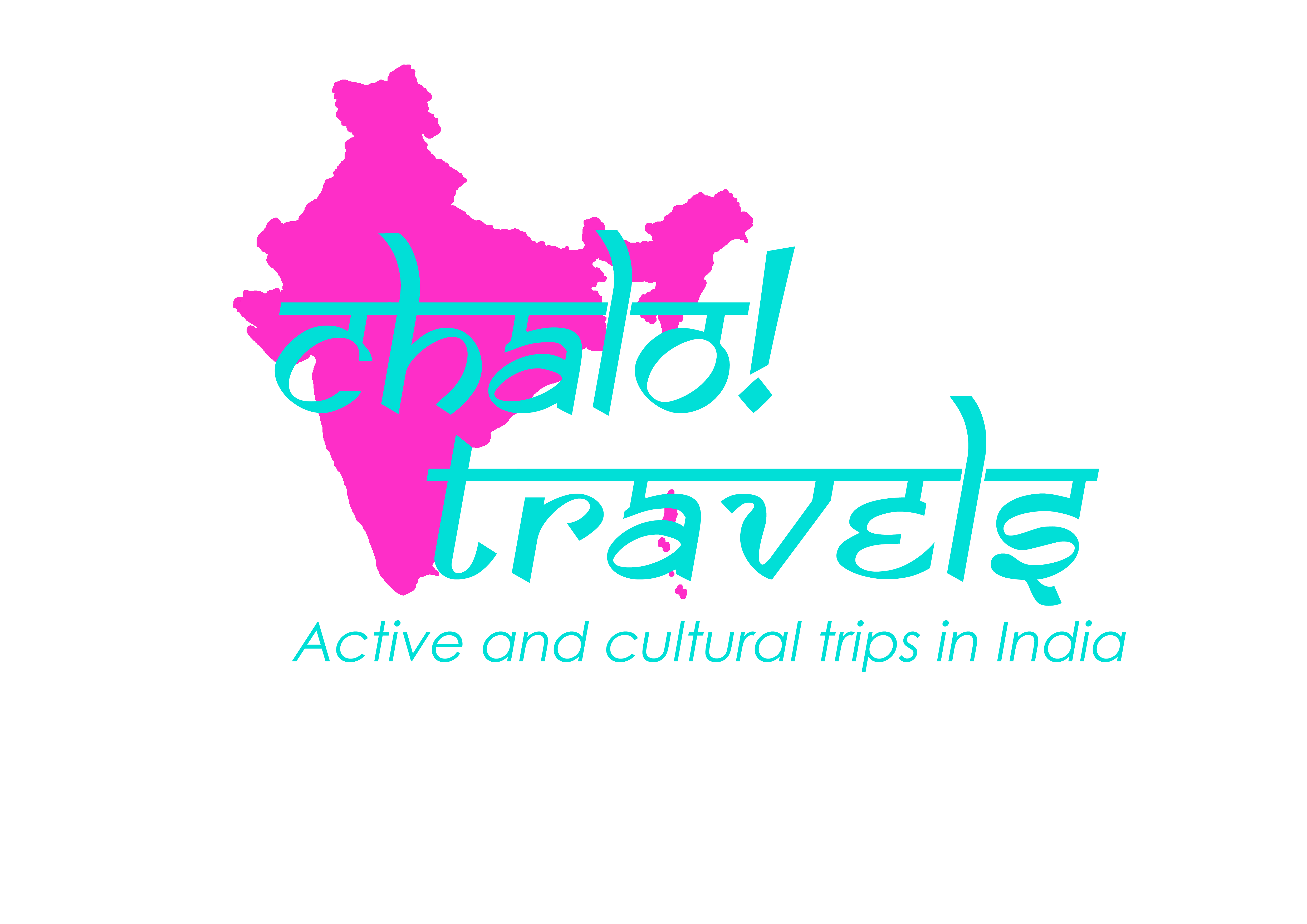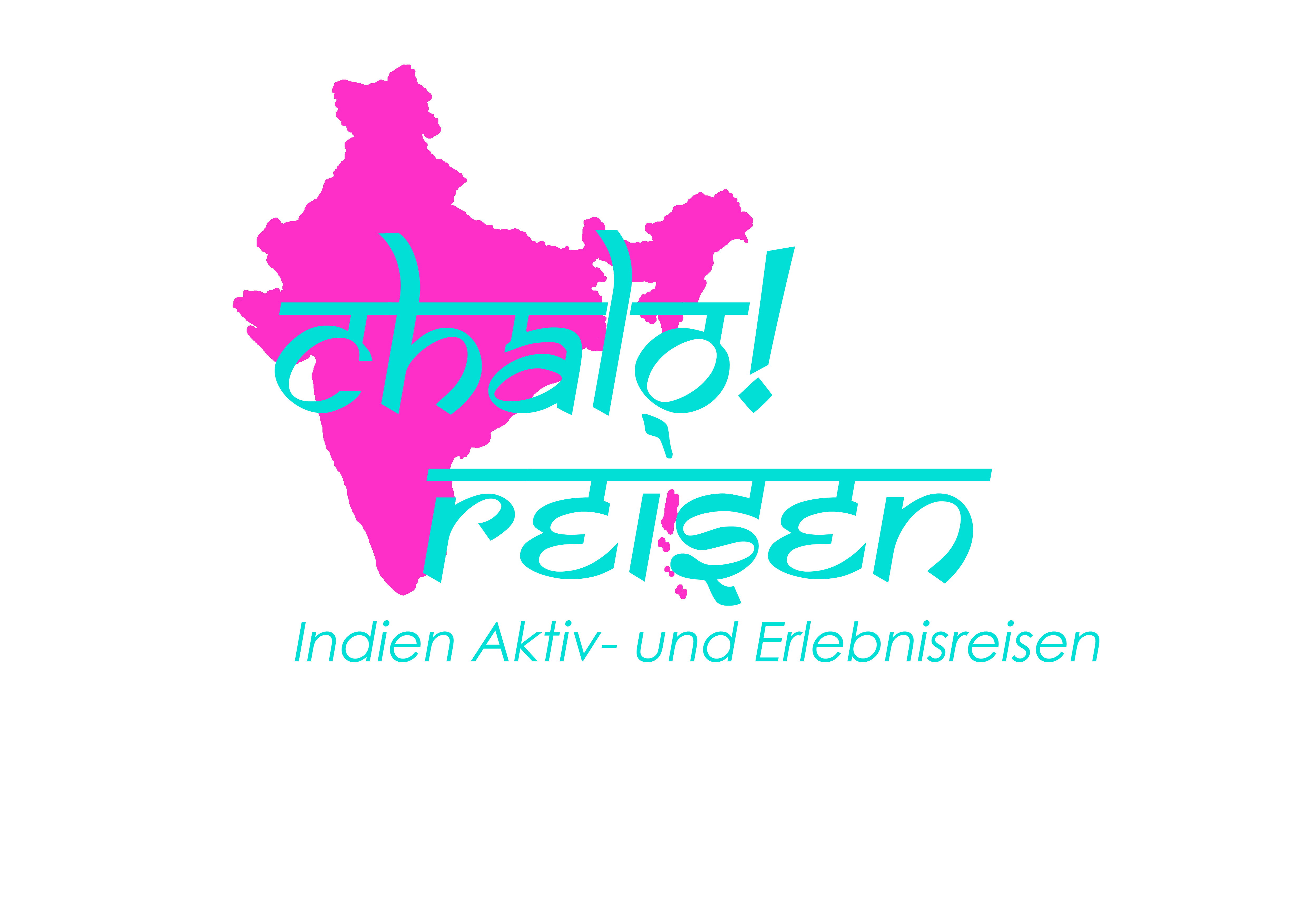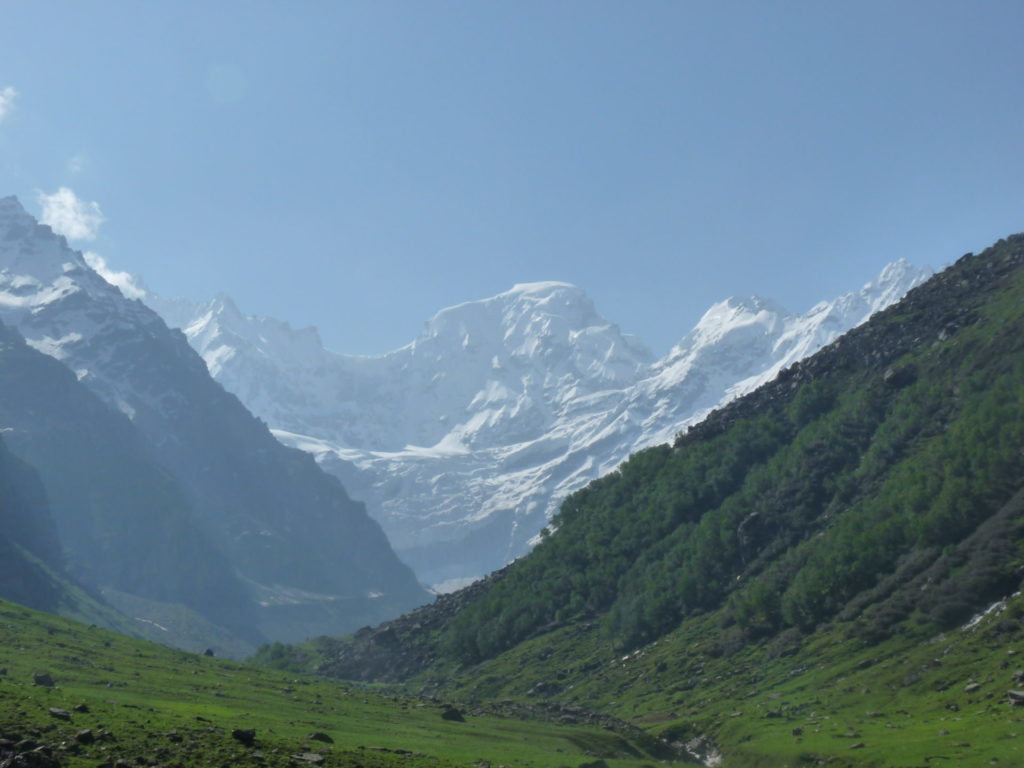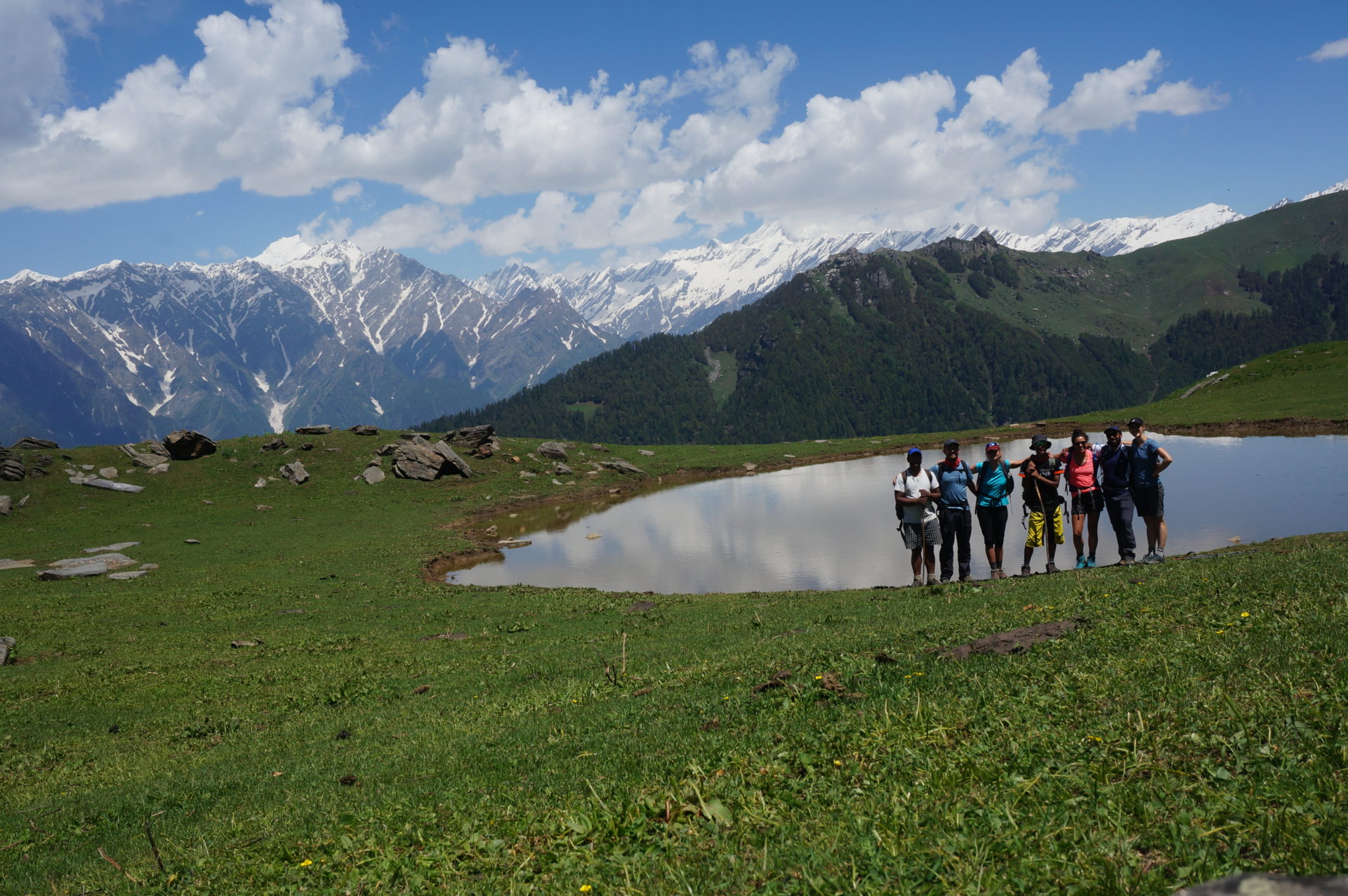- Sport & Abenteuer Reisen
- Reise Bausteine
- Trekking Reisen
Overview
A wonderful moderate trek through the Hamta Valley to the foot of the mighty 6001 meter high Deo Tibba, the second highest mountain in the Pir Panjal mountain range.
It goes through the lush green Hamtatal with great views of the surrounding snow-capped mountains. The valley is not inhabited and we only meet the wandering shepherds with their herds.
The highlight of our tour is probably the day tour on the rugged glacier of Deo Tibbas. Passing glacial crevasses and lakes, we continue towards Deo Tibba. Here you are in the middle of the mountains of the high Himalayas!
Program
Day 1 Jagatsukh to Sarotu (2860 m) 5 to 6 Hours Trek
It’s constantly going uphill. First through the village of Jagathsukh, then we reach an old temple. From here we continue through deep forest until we reach our camp. We have a unique view of Manali. (Overnight in the tent) -/L/D
Day 2 Sarotu (2860 m) to Dhum Dhumni Tach (3980 m) 5 hours Trek
Today it goes moderately uphill over green pastures, small streams and through rhododendron bushes and flowers. Then we cross a river and the ascent becomes a little steeper until we reach a green pasture where horses graze. Here we camp and enjoy the magnificent mountain panorama. (Overnight in a tent) B/L/D
Day 3 Dhum Dhumni Tach to Piyang Niroo (3900 m) 4-5 hours trek
First, it goes for about half an hour uphill to a small beautiful mountain lake at 4110 meters: a perfect place to relax and enjoy the peaceful silence. From here you have a view of the surrounding mountains almost 360 degrees. Then we go down to the magical place Rouli Kuli with its countless small streams. We will find two more small lakes. Among the locals it is said that there are seven lakes in this area, but never before has an individual been able to discover them all! We continue down to the River Jobri. From here we already have a gigantic view of the 6001 meter high Deo Tibba covered with snow and ice. Our camp is on the other side of the river. Nevertheless, it still takes about half an hour to reach it, as we first have to find a suitable place to cross the river. For the next two nights we will set up our camp here. (Overnight in a tent) B/L/D
Day 4 Piyang Niroo to Deo Tiba Basecamp (4480 m) 5-6 hours trek
Today we don’t need to dismantle our camp, but start directly with only a day bag towards Deo Tibba. First we walk along the river on the moraine. Then we continue over pure ice past glacial crevasses and lakes until we reach the base camp of Deo Tibbas. Here you are very close to Deo Tibba, a six-thousand meter peak! After the lunch break we make our way back to the camp. (Overnight in a tent) B/L/D
Day 5 Piyang Niroo to Jobri Nallah (2800 m) 3 to 4 hours trek
Since yesterday’s day was very long, today is a little shorter. It goes along the river, first steadily uphill, then we descend. On the way we will meet shepherds with their flocks and brave people will have the opportunity to take a dip in a cool spring. We reach a small clearing where we will camp. (Overnight in a tent) B/L/D
Day 6 Jobri Nallah to Vashist 5- 6 Hours Trek
First we cross a dam. The rather narrow path winds around a ridge and leads us from the Hamta valley into the Kullu valley. It then descends continuously to the village of Vaschisht. The place invites you for a dip in the natural hot sulfur springs and forms a nice conclusion for the trek! (Overnight in a tent) B/L/-
Services
- Trained trekking guide
- Cook and helper
- Load horses or carriers
- For 5 nights accommodation in 2-man tents
- Kitchen, toilet and dining tent
- 4 days full board (5 x breakfast, 6 x lunch packages, 5 x dinner and 5 x snacks)
- Transport from Manali to the start of the trek
- Transport from the end of the trek to Manali
Highlights
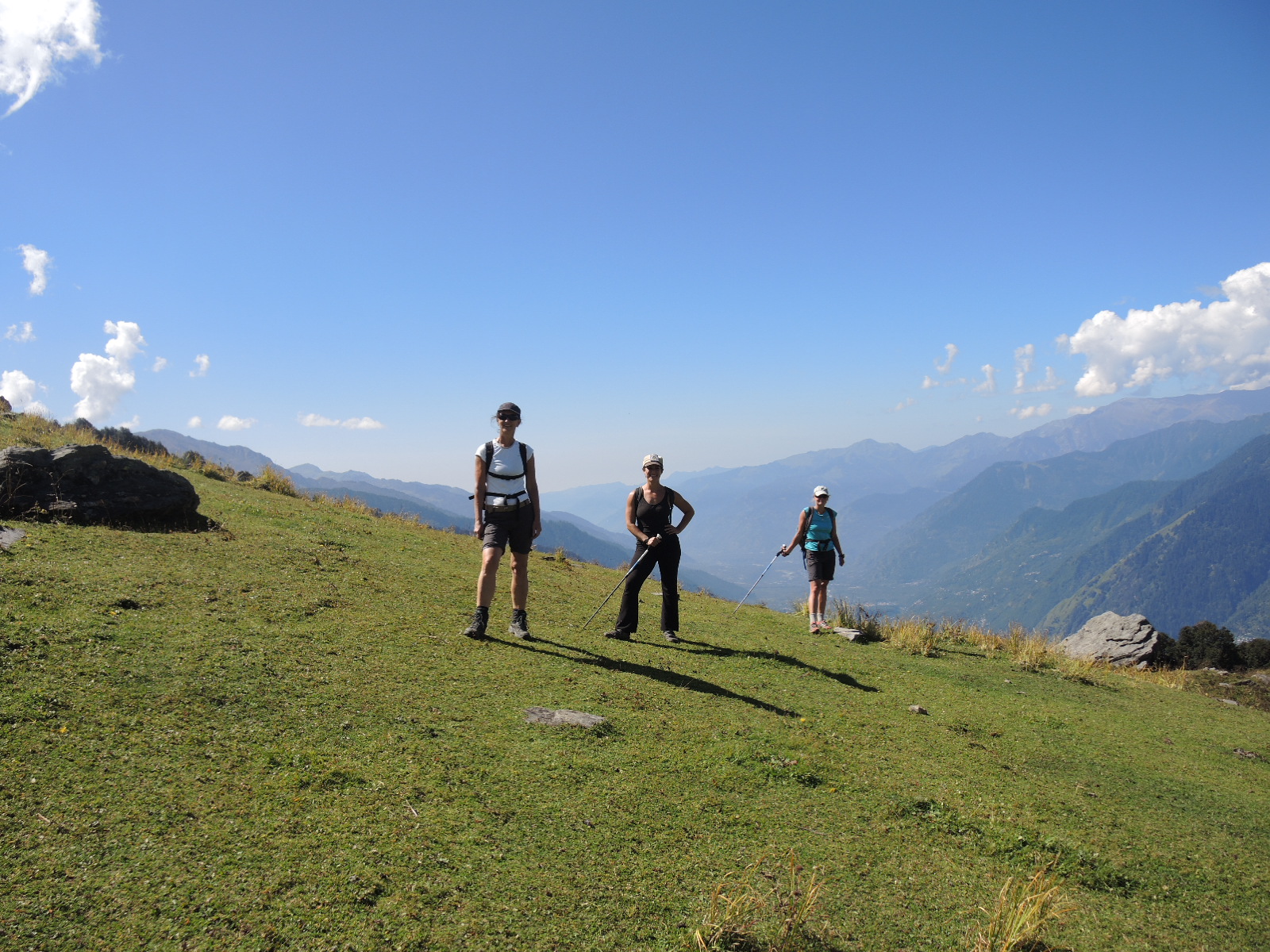
Deo Tibba Basecamp Trek 
Deo Tibba Basecamp Trek 
Deo Tibba Basecamp Trek 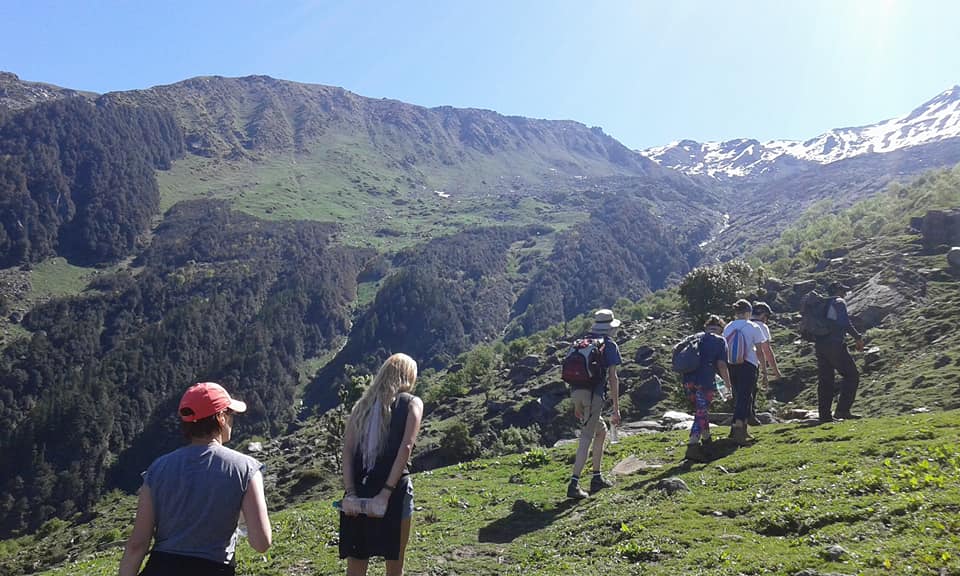
Deo Tibba Basecamp Trek 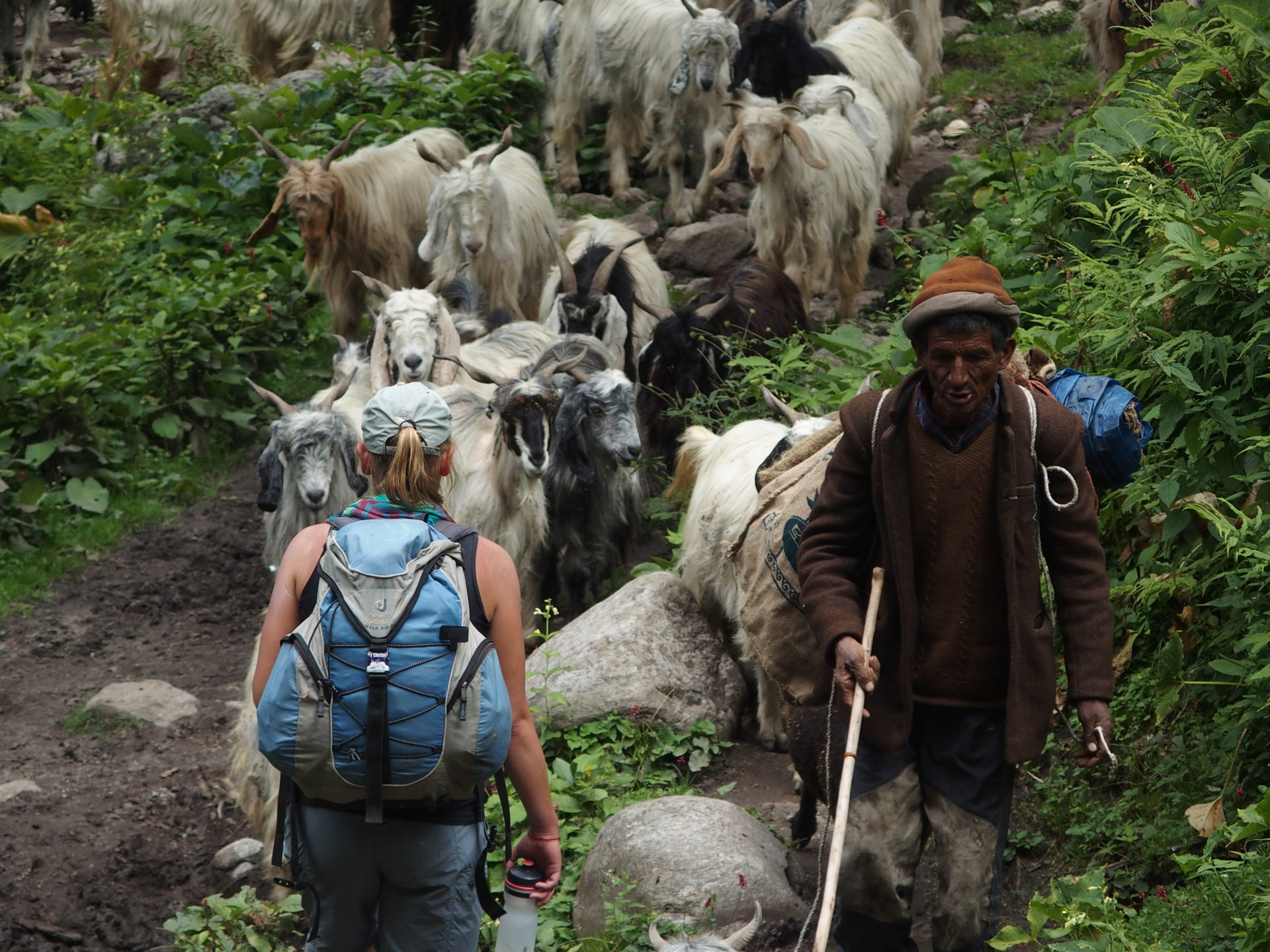
Deo Tibba Basecamp Trek 
Deo Tibba Basecamp Trek 
Deo Tibba Basecamp Trek 
Deo Tibba Basecamp Trek 
Deo Tibba Basecamp Trek 
Deo Tibba Basecamp Trek 
Deo Tibba Basecamp Trek 
Deo Tibba Basecamp Trek 
Deo Tibba Basecamp Trek 
Deo Tibba Basecamp Trek 
Deo Tibba Basecamp Trek 
Deo Tibba Basecamp Trek 
Deo Tibba Basecamp Trek 
Deo Tibba Basecamp Trek 
Deo Tibba Basecamp Trek 
Deo Tibba Basecamp Trek
Prices and Dates
This Tek is possible from May to October. During the monsoon season from mid-July to August, this trek is unsuitable.
From 2 Participants 420 €/Person
Tour Info
Requirements
A moderate trek without too many ascents or descents. We reach a maximum height of 4480 meters. The low oxygen content is already clearly felt here.
Information about the Trekking Tours with Chalo! Travels
Mountain guide and trekking team
On all our treks we have at least one (for larger groups of 6 participants two) trained local mountain guide. Our mountain guides have all completed at least the Indian mountaineering training, many of them have also completed the advanced courses.
They are familiar with the trekking routes and know the terrain excellently. All our mountain guides speak English.
In addition, there is a local team consisting of a cook (if the group consists of only two participants, the mountain guide also takes over the tasks of the cook), helpers, horsemen with horses or Nepalese porters, depending on the type of trek.
All our team members have been working with us for years, are very friendly and always strive to provide our guests with a great trekking experience. Their English (besides of the Guide) is rather mediocre or non-existent, but this is not necessarily a hindrance to communicating with them.
Trekking Routes
The trekking routes are designed according the skills of our guests and are all feasible for a person with a good fitness level, unless otherwise mentioned. The daily routes are between five and eight hours long (with breaks) and an average increase of around 500-800 metres of altitude is completed.
In between, rivers may have to be crossed. The paths are partly well developed, but sometimes also almost non-existent. On our trekking routes there are hardly any villages in between, so we will take enough food for the whole tour.
On our treks we cross passes, snow or glaciers. On steep slopes, we have safety equipment with us.
Daily routine (Depending on the length and intensity of the trek, the times may vary)
7: 00 am Get up with Tea
7:30-8:30 am Breakfast
7:00-9:30 am Dismantling of the camp
8:00- 9:30 am Start Trek
1:00 pm Lunch on the way
3:00-5:00 pm Arrival at the camp and camp construction
3:30-5:30 pm Snacks
7:00 pm Dinner
Altitude and altitude sickness
Altitude sickness is a very important topic that should not be underestimated, especially during our trekking tours in the Indian Himalayas. At altitudes above 3500 m, our body has to slowly get used to the low air pressure, which also causes less oxygen to enter our lungs. The first signs of altitude sickness are headaches, which are accompanied by dizziness, nausea, insomnia and loss of appetite. It becomes problematic when water accumulates in the lungs and brain and edema occurs. Then only the immediate descent to lower altitudes will help. To prepare for the heights on our treks, we will either spend a few nights at high altitudes before the trek or slowly ascend during the trek to acclimatize. If we notice that there are problems with our guests (each person is otherwise able to acclimatize, regardless of age, gender and fitness level), it may happen that either the entire group or the concerned participant descends/returns with a team. In addition, it makes sense to take an emergency drug for altitude sickness. For this, it is best to consult the pharmacy or the travel doctor. For certain treks we will also have oxygen with us.
Luggage
Each trekking participant is responsible for his own clothes and personal belongings. Depending on the trek, we are either with horses or porters. If we have load horses, one bag per participant can be loaded onto the horse. In the case of treks with porters, all personal luggage must be carried independently. Tents, sleeping bags, mattresses and food are carried by our porters.
For trekking tours with horses, a day backpack with space for the lunchbox, a water bottle and warm overcoat clothing should be taken with you. Here to the complete packing list for our trekking tours.
Packing list for trekking tours
- sleeping bag at least -10°C
- large backpack or soft carrying bag so that the load animals can carry the luggage
- Small carrying backpack for the day approx. 30-40 l with rain protection
- flashlight/headlamp
- 2 refillable water bottles
- hiking poles
- passport and passport copy
- camera with spare battery and memory card
- headgear as sun protection
- Good Sunglasses
- cap
- Scarf, Buff
- Gloves
- wind-proof trekking pants
- trekking pants
- Functional Underwear Long
- hiking boots
- socks thick and thin
- sneakers, sandals and/or slats
- windbreaker
- Warm Jacket
- fleece sweater/jacket
- Tshirts
- sunscreen, lip balm min. Protection 40
- fat cream
- water purification tablets (boiled and filtered water is provided)
- own medications for headaches, nausea, digestive problems, colds)
- bubble patches and dressing material
- own hygiene articles
- Toilets Paper
- hand disinfection
Meals
During the trek there will be a vegetarian full catering. Water is either boiled or we have a water filter with us.
Breakfast (daily selection):
- Coffee/Tea
- Oatmeal porridge/muesli/cornflakes/Indian porridge
- Indian breakfast
- Sliced fruit/vegetables
Lunch (mostly lunchbox), sometimes warm in the camp
- Sandwiches/Indian (rice, chapati, vegetables)/potatoes
- Juices
- Chocolate
- Fruit
Snacks
- Tea/coffee
- Cookies
- French fries/Indian snacks
Soup
Dinner (depending on the length of the Trek mix of Indian/Chinese/Continental)
- Vegetable dish
- Lentil dish
- Rice/noodles
- Chapati
- Salad
- Dessert
Accommodation and camp
We have very comfortable and spacious two-man tents. Our mattresses are practical but simple if there are problems with sleeping on hard surfaces, please take your own mattress with you or order from us. Our sleeping bags are freshly washed and have a very good quality with comfort zone up to -5°C/extreme zone up to -20° C. It is recommended to bring personal indoor sleeping bags.
In addition, we have a spacious dining tent with tables and chairs, a kitchen tent for the team and a toilet tent. For treks up to 4 people, the kitchen tent can also act as a dining tent at the same time.
For trekking tours with porters, we will take our smaller, lighter tents with us and do without a toilet tent.
Weather
In the Himalayas, temperatures fluctuate widely. While it can get warm up to 25°C during the day and the sun is not only warming, but also very intense (sun protection is a must), it can also cool down significantly below the minus-grade at night, especially in the months end of September and October, as well as in June. There may also be weather changes with snow on the passes.
